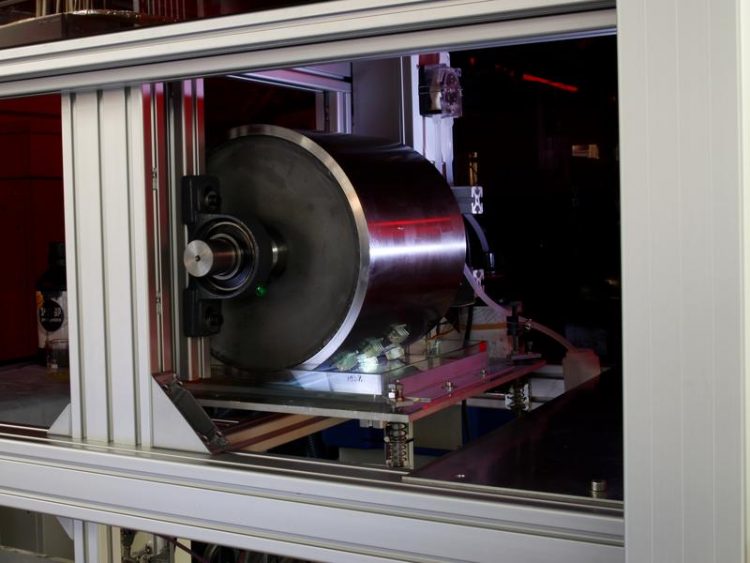Fraunhofer IFAM develops continuous 3D printing for mass production

Continuous manufacture using the layer-by-layer principle for synthetic materials (© Fraunhofer IFAM/Thorsten Müller)
Sponsored by the Volkswagen Foundation, scientists at the Fraunhofer Institute for Manufacturing Technology and Advanced Materials IFAM have developed a new production line which facilitates a continuous and automated operation for liquid synthetic materials. The first components for the consumer sector have already been manufactured.
Powder-based continuous procedures already exist. However, the manufacturing principle cannot be transferred to liquid materials as they are used in the stereolithography process. During conventional stereolithography, selected areas of each layer are cured by radiation of UV light.
This process is repeated layer by layer until the corresponding number of layers for the construction of the components has been completed. The elements are subsequently removed from the installation space, which is then set up again. This is a complex procedure which currently stands as an obstacle to mass production and also demands highly qualified staff.
Continuous manufacture using the layer-by-layer principle
The newly developed process uses the technology of continuous photopolymerisation based on the digital light processing system for the layer-by-layer manufacture of components. The significant difference compared with the usual production systems for additive manufacturing is that this new approach uses a rotating cylinder as the substrate and the flat platform is simply omitted.
The lower part of this cylinder is submerged in a liquid polymer in the process and is illuminated by multiple light sources at an exactly defined and increasing range. This is necessary in order that the polymer can selectively be cured on the surface of the cylinder in different areas at various stages.
As the cylinder gradually rotates, a three-dimensional component is built-up layer by layer on the submerged part of the cylinder. The manufactured components on the top of the cylinder can automatically be detached from the surface. The substrate surface is then ready again and the process can fully proceed.
Continuous manufacture is a great advantage particularly in view of the use of resources, as complete components constantly leave the production line and therefore operations are stabilised and thus improved. Up to now, the production cycle times of the traditional additive manufacturing procedures have been incomparable with conventional production lines of mass production.
The approach of the Fraunhofer IFAM researchers is directed towards cost-effective individual mass production and will significantly improve the economic efficiency of the additive manufacturing technique.
Funding Bodies
Sponsored by the Volkswagen Foundation, file number: 87473
Contact
Fraunhofer Institute for Manufacturing Technology and Advanced Materials IFAM
Juan Isaza M.Eng.
Telephone +49 421 2246-180
juan.isaza.paz@ifam.fraunhofer.de
Media Contact
All latest news from the category: Process Engineering
This special field revolves around processes for modifying material properties (milling, cooling), composition (filtration, distillation) and type (oxidation, hydration).
Valuable information is available on a broad range of technologies including material separation, laser processes, measuring techniques and robot engineering in addition to testing methods and coating and materials analysis processes.
Newest articles

NASA: Mystery of life’s handedness deepens
The mystery of why life uses molecules with specific orientations has deepened with a NASA-funded discovery that RNA — a key molecule thought to have potentially held the instructions for…

What are the effects of historic lithium mining on water quality?
Study reveals low levels of common contaminants but high levels of other elements in waters associated with an abandoned lithium mine. Lithium ore and mining waste from a historic lithium…

Quantum-inspired design boosts efficiency of heat-to-electricity conversion
Rice engineers take unconventional route to improving thermophotovoltaic systems. Researchers at Rice University have found a new way to improve a key element of thermophotovoltaic (TPV) systems, which convert heat…



